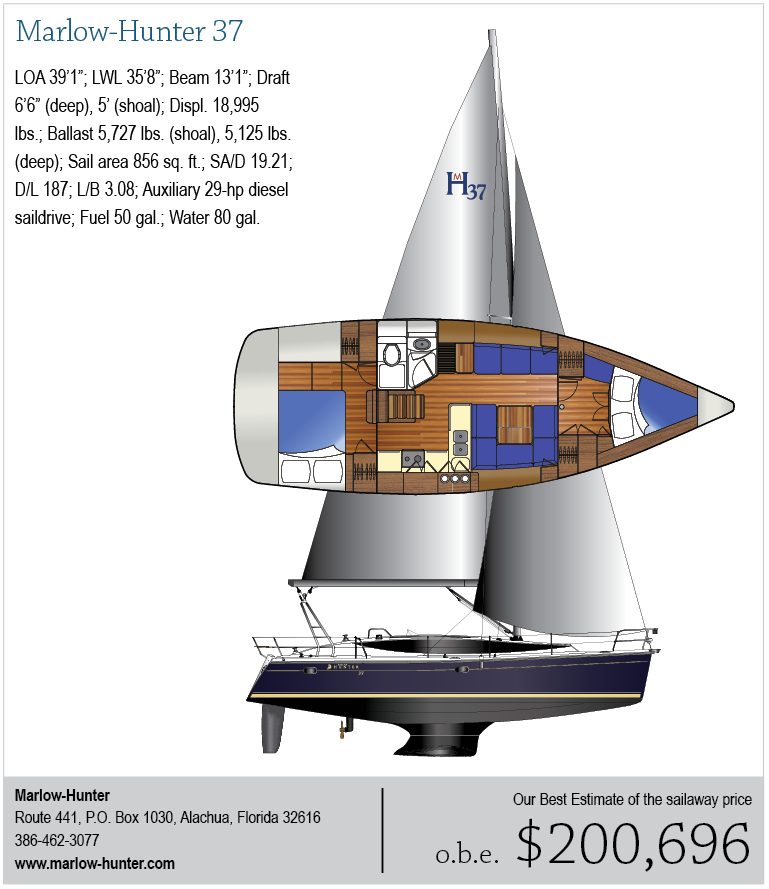Marlow-Hunter 37
Cruiser
I like the look of this new Marlow-Hunter. To my eye, the look combines European-styling elements with U.S.-style proportions. I find it a good look and well done considering the volume they were going after.
The hull design is by Glenn Henderson, who put some hollow in the bow and a slight reverse in the profile of the run aft. This reverse doesn’t do much for you under sail, but under power at speeds above the static hull speed, the reverse can suppress the quarter wave and keep the boat from squatting, as does the chine aft. The chine allows the designer to push volume outboard to flatten the buttocks and add volume where it will enhance stability.

The D/L of this design is 187 and the L/B is low at 2.88, indicating a very beamy boat. Of course, as is pretty much standard today, this beam is carried all the way to the transom to provide more room in the cockpit and the aft accommodations. The svelte, heart-shaped transom is a thing of the past. Sob.
Draft options are 5 feet for those of you in skinny water and 6 feet 6 inches for those of you where the water is deep. Note the large fillets on the keel ends at the root. In the current world of very beamy, short-ended, moderate-displacement boats, I think this boat will perform quite well.
This accommodation plan is what you would have seen 25 years ago in a 44-footer. It’s all there: two nice staterooms with plenty of locker space, a head with adjoining shower stall, spacious galley with lots of counter space, U-shaped dinette and even a reasonable, forward-facing, navigation station. I can’t fault this layout. I’d have to see what contortions were required, if any, to get into that aft double berth before being certain about my convictions, but from what I see in the plan view this layout looks ideal.
The refrigerator is located inboard of the double sinks. It is a front-loading unit. That style of installation is gaining in popularity. Two couples will not be cramped in this layout.
The Marlow-Hunter approach to rig design has not changed much over the last 30 years. They still use the Bergstrom-Ridder-type rig with aggressively swept spreaders. Today, swept spreaders are found on almost every production boat, but Marlow-Hunter has been doing it longer than other manufacturers.
Swept spreaders need only one set of chainplates—outboard on the hull in this case—and the rigid spar doesn’t require tuning for bend. The only disadvantage is that off the wind you will quickly impale the mainsail on the spreaders as you ease the mainsheet. But considering the longevity of this rig geometry, Marlow-Hunter must not see this as an issue.
The mainsheet on an arch is relatively new but Marlow-Hunter has used it now on several models. It gets the mainsheet traveler out of the cockpit but, for my taste, the boom is a bit high with this feature. It depends upon your priorities I suppose. Using Marlow-Hunter’s numbers for sail area I get a SA/D of 19.24 or the standard rig and 17.17 for the “furling” rig. It’s a good number for a cruising boat.
The cockpit extends all the way to the transom as is common today, and there is a drop down door to provide swim step access to the cockpit.
Marlow-Hunter is alive and well tapped into the tastes of U.S. boat buyers.

Comments